How to Make Your Georgia Home Energy Efficient
A guide for Georgians interested in improving the energy efficiency of their homes.
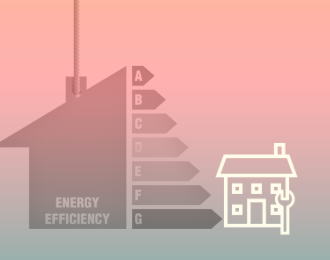
What Does an Energy-Efficient Home in Georgia Mean?
Learn what elements make up an energy-efficient home, and how to get started transforming your Georgia home.

How Do I Go About Getting get a Home Energy Audit?
Home Energy Audits can be simple over-the-phone or questionnaires, on-site visual assessments, or include diagnostic testing.

Heating and Cooling and Home Energy Efficiency in Georgia
Find out what matters for home heating and cooling in Georgia. That includes ductwork, filters, ENERGY STAR, and tax incentives.
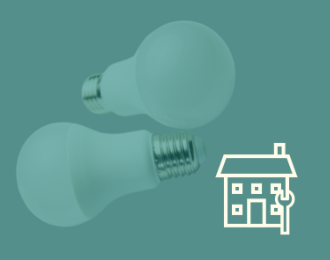
How Does Lighting Affect Energy Efficiency in a Home?
Discover why LED bulbs matter to energy efficiency compared to incandescent bulbs, and how they will benefit you and your home.
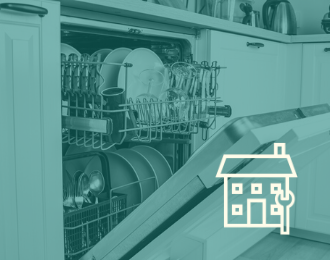
How Can Home Appliances Be More Energy Efficient?
When it comes to home appliances, you'll want to pay attention to ENERGY STAR ratings to find the most energy efficient!
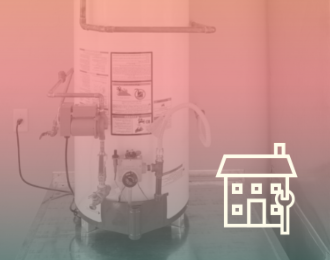
How Do Water Heaters Affect Home Energy Efficiency?
Learn about the different types of water heaters available for Georgia homes and how they contribute to energy efficiency.
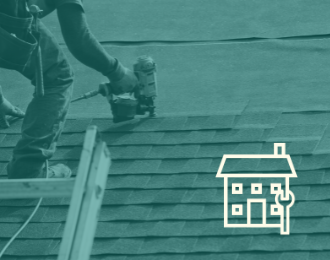
How Does Roofing Affect Home Energy Efficiency?
What roofing options do you have in Georgia? Does color matter? What about metal roofs and flat ones, not to mention green ones?
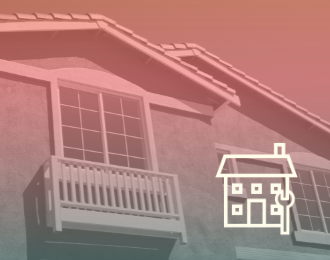
Do Windows Affect Home Energy Efficiency?
Find out about single- vs. double pane windows and how ENERGY STAR helps you, so you can select the best windows.
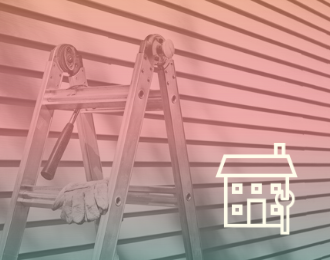
Is Energy-Efficient Siding / Cladding Available in Georgia?
What role does siding play compared to cladding when it comes to ensuring your Georgia home is energy efficient?
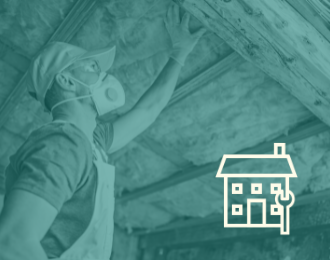
What Role Do Home Insulation and Air Sealing Play?
Insulation and air sealing play a significant role in making your home more energy-efficient.
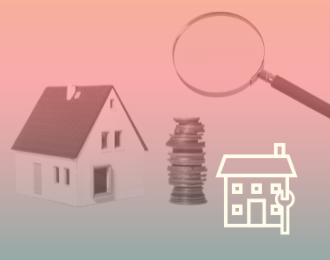
How To Finance Home Energy-Efficiency Improvements?
Discover financing options for home energy efficiency such as Green Loans, Homestyle Energy, and Energy-Efficiency Mortgages.

Other Resources: Learn More About Home Efficiency in Georgia
Interested in learning more? There are many great resources available to help you maximize the energy efficiency of your home.

Glossary of Terms
Learn more about some of the terms and concepts that show up in this toolkit with our Energy Efficiency Glossary of Terms.
What Does It Mean To Have an Energy-Efficient Home in Georgia?
The short answer is, “Yes, all of these,” but a truly energy-efficient home utilizes these elements and more to create a whole-home system that actively and passively reduces your home’s energy use. After all, it does little good to improve your heating and cooling system if all your conditioned air is escaping through poorly sealed ducts, doors, and windows.
The good news? There are many measures you can take on your own to achieve a more energy-efficient home. Regular preventive maintenance on your HVAC system, replacing old incandescent light bulbs with LEDs, updating your appliances to more energy-efficient versions, and identifying and sealing leaks in your building envelope are steps you can take to improve your home’s efficiency.
If you would like to take your home energy-efficiency journey a step further, you can hire a professional to perform a home energy audit. They will test your home’s heating and cooling efficiency as well as provide an energy model to get a more holistic understanding of how your home uses energy and the measures you can take to improve your usage.
This toolkit will provide you with the information you need to make your home more energy efficient.
How Do I Get a Home Energy Audit?
What Is An In-Home Energy Audit?
Although it is possible to do certain in-home checks for a few specific energy-efficiency items, a more thorough and holistic assessment is best performed by a professional. The assessor will create a custom Scope of Work (SOW) that is specific to your home. In addition, it is helpful to identify contractors who can bid on the SOW and perform the improvements – many companies can perform both the assessments and upgrades.
Home Energy Assessments can be simple over-the-phone or written questionnaires, on-site visual assessments, or in-person visual plus diagnostic testing, such as house and duct leakage. Assessments should focus not just on energy but also on health and safety, durability and resilience, comfort, and even potential opportunities for renewable energy.
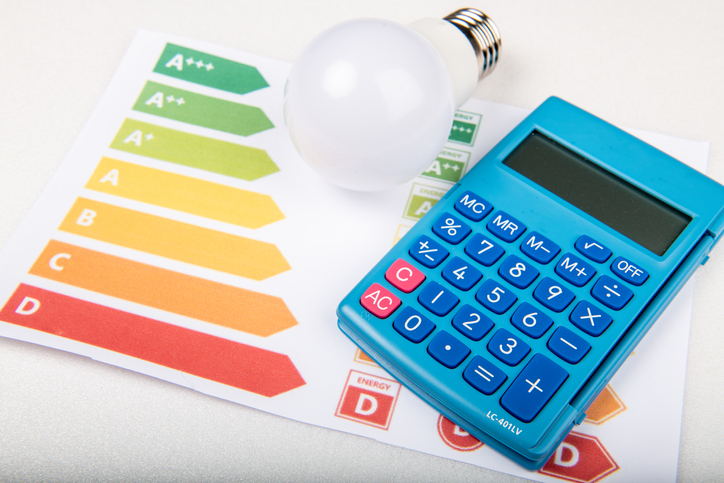
How Much Does An Energy Audit Cost in Georgia?
Some assessments may be free of charge, such as assessments offered by a local utility. Others may be subsidized or rebated. Costs vary depending on the depth and quality of the assessment, from a few hundred dollars to upwards of $1,000 for a more complex home with a detailed audit.
For example, a larger home with three ducted mechanical systems will need more assessment and diagnosis than a simple one-story home with one HVAC system. In addition, if an energy simulation is performed, the assessor will need to charge for the time to collect the information and create the energy model. The benefit of the simulation is that it can predict the energy savings for each component upgrade
How to Find a Home Energy Auditor and What to Look For
For a guide on how to do a basic assessment of your home, consult with ENERGY STAR.
Another great place to begin is with your local utility. There you can often find assessors and potentially learn about contractors who can perform the work as well as any possible incentives or rebates. Proper home assessments can be complex and oftentimes, homeowner-determined solutions such as, “I’m cold, I must need more insulation,” fall flat as critical details get missed.
A best practice is to employ an assessor that holds a recognized credential from an entity such as Building Performance Institute (BPI) or RESNET Home Energy Rating System (HERS). It also helps to have a trained weatherization contractor that understands the important details of energy efficiency. Certain HVAC contractors have branched out into the Home Performance field and they understand that fixing the home’s thermal envelope issues is critical to achieving comfort and efficiency.
The building thermal envelope is the “blanket” that separates conditioned space from unconditioned and outdoor spaces. The building thermal envelope consists of the air barrier and insulation – the coverage must be continuous and in complete contact in order to work properly.
Heating and Cooling
What Are The Most Energy-Efficient Cooling Options for Georgia?
A SEER rating is the “cooling output per energy input” efficiency term most commonly used for rating the efficiency of air conditioning (AC) systems. Another similar term is an EER rating, which is used for window unit ACs and ground-coupled (i.e., geothermal heat pump) equipment. The minimum SEER rating for the southern US is scheduled to increase from 14 to 15 on January 1, 2023.
Because air conditioning is not just about cooling the air but is also concerned with dehumidifying the air, the SEER term can be a bit misleading. New AC systems are supposed to be sized properly using a code-required cooling load calculation. This calculation, known as a Manual J, determines the amount of heat gained on the house during the hottest day of the year. New equipment should be selected to meet the calculated load using a process known as Manual S. This is often skipped on retrofits but absolutely should be performed as oversized equipment costs more, short cycles, doesn’t last as long, and does not dehumidify properly, which affects comfort, durability and efficiency.
The most important feature to look for in new AC equipment is variable speed and capacity. Traditional one-speed equipment is inherently oversized for the vast majority of the summer cooling season while variable speed equipment is able to slow itself down. This means it can match the cooling needs at that particular moment, which results in low energy use, high efficiency, and excellent comfort and dehumidification. This feature is worth it!
Ductwork is another huge variable and many duct systems are either leaky, poorly designed (such as inadequate return air pathway), or poorly installed. A perfect opportunity to seal and improve the ducts is at the time of equipment replacement – take advantage of this chance to fix the common distribution problems with the ducts. Finally, mini-split air conditioning systems either eliminate or greatly reduce the problems of ducted systems and are also often variable speed. They can be an excellent choice for certain applications, such as small spaces.
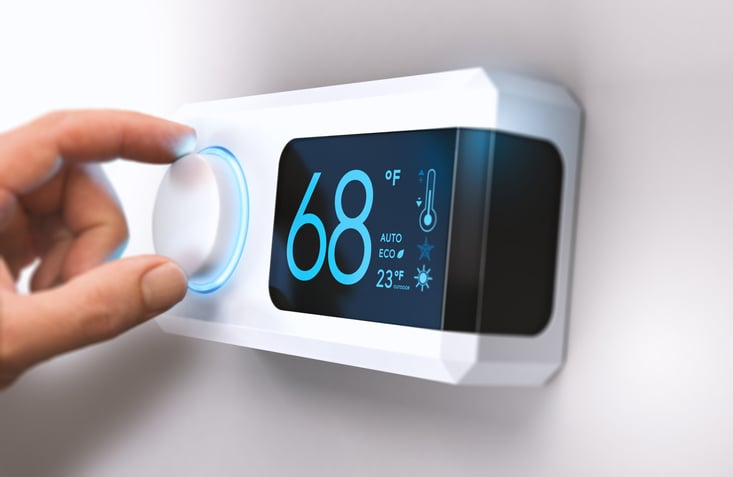
What Are The Most Energy-Efficient Heating Options for Georgia?
The two main sources of space heating available in Georgia are burning natural gas in a furnace and using an electric heat pump. As our electricity grid becomes increasingly cleaner, it will be important to move away from fossil fuels and toward electricity as the source of space heating. Consider switching to a heat pump now if your furnace is due for replacement.
Furnace efficiency is reflected by an AFUE rating. Some very old (30+ year) furnaces use a gas pilot light, are only about 65% efficient, and have the potential for backdrafting and spilling dangerous carbon monoxide into the living space. These units are ripe for replacement! Standard furnaces today use electronic ignition, are about 80% efficient, and have a reduced risk of backdrafting. The most efficient furnaces today are known as sealed combustion direct vent units, and they are both very safe and efficient (about 95% AFUE rating). Any furnace being replaced today should switch to a 2-pipe, high-efficiency unit, which offers the advantage of vertical or side-vented installation. These units are easily identified by the intake and flue pipes constructed of PVC plastic as opposed to the metal flue on a standard furnace.
An alternative to a gas furnace is an electric heat pump – typically an air-to-air unit but it could also be a ground-coupled unit, which is more expensive. A heat pump in the summer is virtually identical to an air conditioner. A heat pump has an added component known as a reversing valve that allows it to operate backward in the winter and provide heat during the colder months of the year. Similar to the SEER rating term, the winter efficiency rating term is known as HSPF. When the temperature outside is very cold, the heat pump’s ability to deliver heat is reduced and more expensive backup electric resistance heat must be used; fortunately, only for a few hours of the winter. In general, try to avoid electric resistance as a source of heat.
Dual-fuel electric heat pumps have the ability to switch over to a gas furnace as the heating source when the outdoor temperature gets very cold. This eliminates the use of electric resistance as a backup heat source. And, due to their variable speed, cold weather mini-split heat pumps can operate efficiently, even when the outdoor temperature is very cold (~5oF).
Remember, upgrading to a heat pump in an existing home could be a challenge if the home itself is not also weatherized with improvements to the ducts. Always improve the building envelope and ducts first and then right-size the new, more efficient equipment.
How Does ENERGY STAR Rate HVAC Systems?
ENERGY STAR rated equipment is higher than minimum efficiency (SEER for cooling systems, AFUE for gas furnaces, and HSPF for heat pumps in the winter mode).
Again, if the equipment has the VERY desirable feature of variable speed/capacity, it will most likely be ENERGY STAR rated. Check ENERGY STAR for more information about heating and cooling.
Do Energy-Efficient HVAC Systems Cost More?
Yes. But more efficient mechanical systems are generally worth the added costs with paybacks well within the ~15-year lifespan of the equipment. In addition to energy savings, the improved comfort and moisture control add great value.
Are There Tax Incentives for Energy-Efficient HVAC Systems in Georgia?
Be sure to check with your local utility to see what incentives may be available. You can learn more here: www.dsireusa.org.
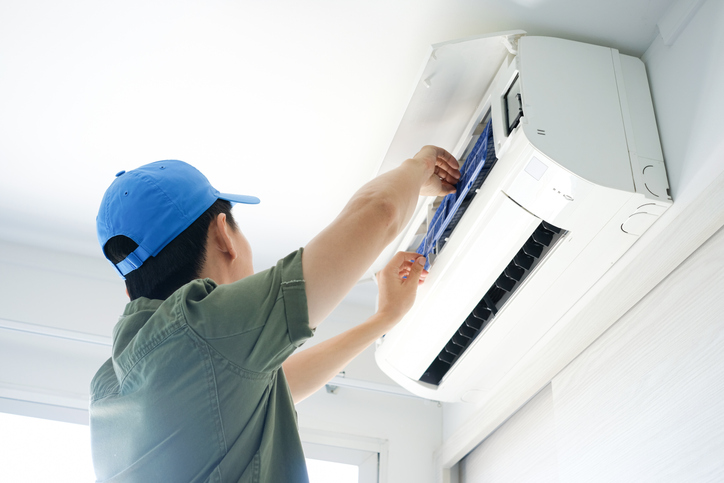
How To Choose the Right HVAC Contractor?
Check to see if your utility has any preferred contractors based on their credentials- not based on the number of systems installed. A good question to ask your potential HVAC contractor is about training and credentials that they have acquired. Many contractors are trained to only diagnose the unit and don’t understand the importance of the duct system and airflow concerns, so ask about these potential problem spots.
Some HVAC contractors are also knowledgeable about home performance contracting and thus tend to have a more holistic “House as a System” approach. Ask if the contractor performs Manual J load calculations. If the contractor doesn’t do load calculations, how do they know what size system is correct for your home?
For a deeper dive, check out the Southface Institute webinars on load calculations and ductwork.
What Is a Heat Pump?
Instead of burning fuel to produce heat, a heat pump moves heat from one location to another. In the summer, a heat pump is identical to an air conditioner – it “pumps” heat from inside the house to the hotter outdoors by circulating a refrigerant. A “heat pump” differs from an AC in that it can reverse its direction and “pump” heat from the colder outdoors in winter and deliver this heat to the inside for space heating.
An electric motor that drives a compressor to circulate a refrigerant is the heart of any air conditioner/heat pump system.
What About Filters?
Most HVAC filters are only 1 inch thick, should be changed monthly, and are there mainly to protect the equipment, not to capture particles that affect indoor air quality. While more efficient 1-inch filters are available, they can cause reduced airflow, which strains the equipment and can affect performance. A thicker, 2-5 inch pleated filter that is properly sized can offer excellent filtration without overworking the main blower. An added benefit is that a better filter can last 6 months to a year and capture smaller particles that affect human health.
For a deeper dive, check out the Southface Institute webinars on ventilation and IAQ.
Do I Need a Fresh-air Ventilation System?
Yes. All homes should be constructed tightly to reduce drafts and control unwanted intrusions like pollen and moisture from entering. Since people live in the house, it is important to both provide fresh air from outside and to exhaust pollutants from kitchens and bathrooms from inside the home. There are several strategies for providing positive pressure ventilation as well as Energy Recovery Ventilators (ERVs) to create balanced pressure air changes.
For a deeper dive, check out the Southface Institute webinars on ventilation and IAQ.
Lighting
Light bulb technology has improved in recent years. The Thomas Edison-era incandescent light bulb is basically a short-lived (~1,000 hours) electric space heater that puts out light as a by-product. Halogen bulbs are similarly inefficient. While fluorescent lighting is about four times more efficient than incandescent bulbs and has been around for some time, issues with ballasts and the fact that all fluorescents contain toxic mercury mean the sun is setting on this technology. Fluorescent bulbs should always be recycled – many home centers accept them.
A more efficient option is the Light Emitting Diode (LED) bulb. LED lighting is about six times more efficient than incandescent bulbs, lasts between 15,000-25,000 hours, contains no toxic mercury, and starts up quickly when power is supplied. The cost of LEDs has come down to the point where this technology should be utilized in virtually 100% of applications.
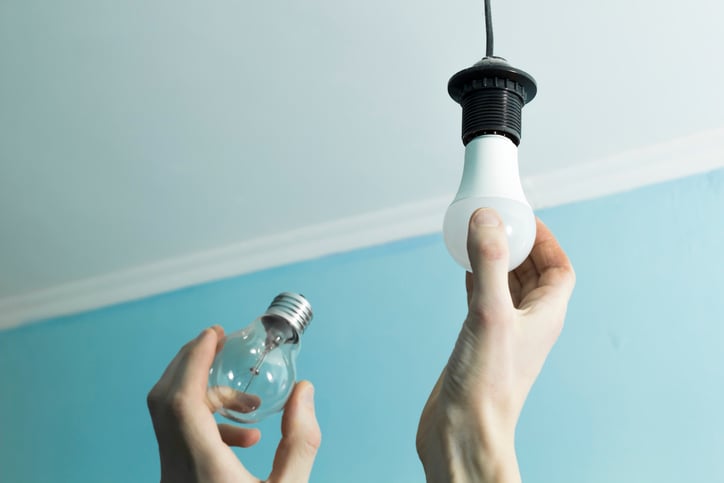
How Do Energy-Efficient Light Bulbs Work?
An LED bulb produces light by passing the electric current through a semiconducting material known as a diode. This then emits photons (light) through the principle of electroluminescence. LED lights do not rely on heat to produce light, which means they run cooler and are much more energy efficient than incandescent light bulbs.
How Can I Tell If A Light Bulb Is Energy-Efficient?
To check whether a light bulb is energy efficient, unscrew the bulb and read the wattage. An LED bulb will deliver the same light as an incandescent for about 1/6 of the power. For example, a 60 Watt incandescent bulb can be replaced with a 9-10 Watt LED that produces the same light output (lumens).
When an incandescent bulb has been on, the bulb surface is too hot to touch comfortably; even a fluorescent bulb will be fairly warm when operating. An LED base may be hot, but the bulb is usually barely warm.
Do Energy-Efficient Light Bulbs Cost More?
Today, LED bulbs are affordable and offer many features. The added cost, if any, is minimal and would likely be paid back in less than one year. The savings from LEDs are even better in the summer since less heat from your lights means less work for the air conditioner.
Should I Wait Until My Incandescent Bulbs Burn Out To Replace Them With LED?
No! Due to their affordability, it is actually much more economical to replace all incandescent bulbs immediately with LED lighting. Over the life of an incandescent bulb, the cost of the bulb is very small compared to the cost of the energy it uses. Switching to 100% LED lighting is one of the economic “no-brainers” in terms of efficiency.
How Does ENERGY STAR Rate Lighting?
ENERGY STAR LED bulbs are approximately the same efficiency as generic LED bulbs but the key difference is quality and bulb life.
Check out this ENERGY STAR link to light bulbs and this link to certified light fixtures for more information on LED bulbs.
Appliances
What Are Energy-Efficient Appliances?
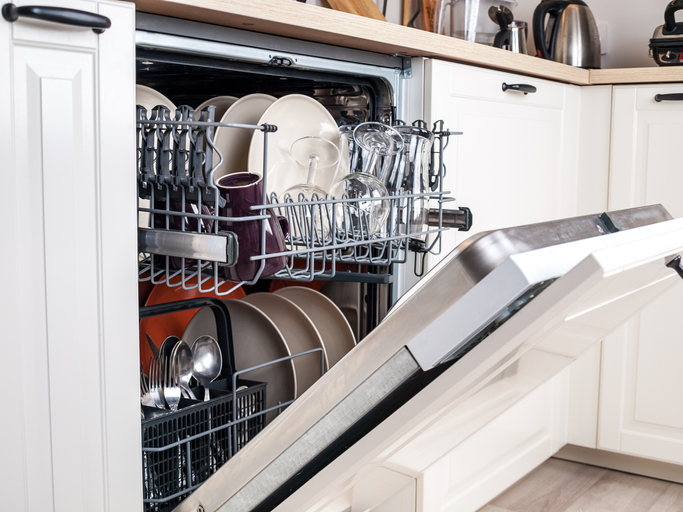
Do Energy-Efficient Appliances Cost More?
Usually yes, but only by a small amount. Improved quality and features plus reduced operating costs can help to offset the marginally higher initial cost.
How Does ENERGY STAR Rate Home Appliances?
ENERGY STAR works with manufacturers to set efficiency standards for appliances and periodically reviews the degree to which the more efficient appliances have achieved market penetration. After a certain point, the standards are increased.
What Are The Most Energy-Efficient Home Appliance Options for Georgia?
One of the easiest ways to determine the “cream of the crop” is to review ENERGY STAR’s Most Efficient list for a particular year. This allows you to find the manufacturer of the very best in any appliance category.
For example, there are many ceiling fans available on the market and quite a few meet the ENERGY STAR criteria. However, checking ENERGY STAR’s Most Efficient list for ceiling fans yields a handful of DC-motor-based ceiling fans. These fans typically use a whopping 70% less energy than standard AC-motor-based ceiling fans. Common settings of under 30 Watts on high speed, 10-20 Watts on medium, and a miserly 2 Watts on low speed push this technology to the top of any efficiency list. If you have ceiling fans that you run frequently, upgrade them to DC-motor based units.
Are There Tax Incentives for Energy-Efficient Appliances in Georgia?
There may be. Always check with your utility and also with www.dsireusa.org.
Occasionally there are sales days on purchases of ENERGY STAR appliances with no state tax added.
Water Heaters
What Are the Different Types of Water Heaters?
Water heating equipment can be divided into two types- gas or electric. Tank systems contain the water in an insulated vessel that features a moderately sized burner or element and a thermostat to maintain the temperature of the water in the tank. As hot water is drawn out, cold water comes in and is heated, thus a 40-gallon tank water heater can deliver more than 40 gallons of hot water in one hour of operation. This is known as the First Hour Rating.
Tankless units are smaller since they don’t have this storage capability. They rely on extremely large burners to “force” heat into the water as it flows past and could be limited by their ability to heat water for too many appliances at the same time.
Energy Factor (EF) is the traditional efficiency term used to rate water heaters and it considers both how efficiently heat is put into water as well as standby losses (such as tank heat loss due to conduction) when the water heater isn’t firing. It’s fine to compare electric to electric or gas to gas, but it is misleading to compare the EF of a gas water heater to an electric one.
Today, a newer term, Uniform Energy Factor (UEF), attempts to rank equipment based on more realistic hot water usage in homes. Again, compare units of similar size and fuel to make a valid comparison.
In 2015, water heaters were mandated to be more efficient so most pre-2015 units are potential candidates for efficiency upgrades.
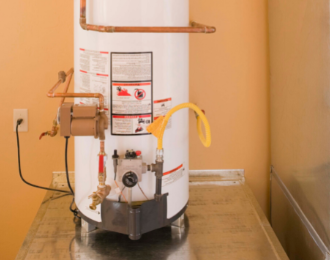
What Are The Most Energy-Efficient Water Heater Options for Georgia?
There are several different options for water heaters in Georgia.
With gas as the fuel source, the standard gas tank units are less expensive than tankless units. Their installed gas line is sized for a modest-sized burner (~40,000 Btu/h) and they often have a pilot light which negatively affects their standby losses; most are minimum efficiency. Tankless gas units often have significantly higher up-front costs and may have a hidden retrofit installation charge to upsize the gas supply line. They include electronic ignition (no pilot light), come in both standard and high efficiency and are also inherently more efficient because they only heat the water being drawn at that moment. Given these factors, the payback on gas tankless retrofits may be very long but their other features may still be desirable.
With electricity as the fuel source, a tank is the way to go. Tankless electric may seem like a good idea, but it will require significantly more electrical infrastructure to “force” the heat into the water as it flows by and is not friendly to the utility. These are best used only in remote locations like far-away restrooms.
Electric resistance tank water heaters are simple and have relatively low upfront costs. However, their operating cost is extremely high since they rely on electric resistance elements to heat the water in the tank. When electricity is used as the fuel, a heat pump water heater is a vastly better solution depending on the location and circumstances. Since heat pump water heaters are about three times as efficient as electric tank units, their operating cost is substantially less and this helps to pay back their higher upfront cost fairly quickly (~2-5 years). A basement is an ideal location for a heat pump water heater since the heat pump provides free dehumidification of the basement when it operates. These units do require some amount of volume around them to extract the heat from (some can be ducted to other locations) and they are noisier than typical water heaters so properly locating them is important.
Do Energy-Efficient Water Heaters Cost More?
Yes, particularly the cost to retrofit a gas tank to a tankless gas unit. Besides the appliance itself costing more, the retrofit installation likely involves upsizing the gas line, which adds to the installed cost. While there may be other features of a tankless gas water heater that are appealing (like not running out of hot water, safer combustion, ability to side vent with PVC pipe, etc.), generally the economics of the energy savings alone make this retrofit into a long (25+ years) payback.
Electric heat pump water heaters however have a favorable payback (~2-5 years) over a traditional electric resistance tank unit.
How Does ENERGY STAR Rate Water Heaters?
ENERGY STAR selects the higher efficiency units in a category comparing the UEF of similar appliances. Again, it is apples to oranges to compare gas to electric UEFs.
Check out the list of certified water heaters from ENERGY STAR.
Are There Tax Incentives for Energy-Efficient Water Heaters in Georgia?
There may be. Always check with your utility – particularly for rebates on heat pump water heaters – and also check www.dsireusa.org.
Occasionally there are sales days on purchases of ENERGY STAR appliances with no state tax added.
Is Hot Water Distribution Important?
Hot water distribution losses are probably more important than the device that actually makes the hot water, but are not as well understood. There are antiquated plumbing codes that can lead to widespread problems with poor hot water distribution. Ideally, hot water lines should be small in diameter because all of the volume of water in the hot line must be run down the drain before hot water can reach the fixture. This is especially important with the advent of low-flow fixtures.
Also, the source of hot water should be centrally placed with the fixtures located as close as possible to the device. For larger homes, it may be better to have two water heaters that are not located near each other but instead are located near the fixtures they serve.
For existing homes, a demand-controlled circulating pump can be a great retrofit that will save energy as well as add convenience by getting hot water to all the fixtures faster. It is important that the controls be demand-based, as timer and thermostat controls require more energy use.
How Can I Make My Tank Water Heater Last Longer?
A simple thing to do once or twice a year is to connect a hose to the drain valve and rapidly flush water from the bottom of the tank a few times. This helps to remove the sediment at the bottom of the tank which impacts the unit’s life.
A great resource is www.waterheaterrescue.com.
What Else Can I Do To Reduce My Hot Water Costs?
One option is to insulate all accessible hot water piping. You should be cautious of adhesive-type pipe insulation as the glue tends to fail over time. Adding zip ties can ensure it holds permanently.
You can also consider retrofitting to a demand-based circulation system and utilizing low-flow fixtures, especially EPA WaterSense-rated showerheads and faucets.
How To Choose the Right Plumbing Contractor
As new water technologies emerge, it is important to work with plumbers who keep their skills current. Ask them about demand-based circulation systems, insulation for all hot water piping, and WaterSense fixtures. If you are building a new home or structure, ask about pipe sizing.
Roofing
What Are The Most Energy-Efficient Roofing Options For Georgia?
Depending on how your attic is insulated, the roof surface can have a variable impact. If the flat ceiling is poorly air sealed and insulated and there is HVAC equipment and ductwork in the attic, the amount of solar gain from the sloped roof above can be quite significant. Alternatively, if there is no HVAC or ductwork in the attic, and the flat ceiling has been sealed and insulated well, the roof has minimal impact on the efficiency of the home.
For a deeper dive, check out the Southface Institute webinar on insulated rooflines.

What Is The Most Energy-Efficient Roof Color?
Due to solar gain, a lighter-colored, reflective roof surface will absorb the least amount of solar energy on a hot summer day. Besides color, the roof texture will impact its ability to reflect or gain energy. A black fiberglass or asphalt shingle is a very good absorber of radiant solar energy – NOT a desirable feature in a home that is air-conditioned.
While many roofers think attic ventilation is critical (Spoiler: it really isn’t that important!), it turns out that venting out the hot attic air is just treating the symptom of radiant solar gain and not the cause. Code minimum venting is fine – just don’t ever use a powered attic ventilator fan since it often cools by sucking air-conditioned air from the house up into the attic, which is wasteful. To keep a vented attic cool, either install a reflective, less absorptive roofing material or install a radiant barrier on the underside of the roof decking (facing the attic).
Is a Metal Roof More Energy-Efficient?
Metal roofing costs more but has the benefit of high recycled content, strong durability and less solar absorption. Special coatings can be added to metal roofs to make them more reflective regardless of their color.
Are Flat Roofs More Energy-Efficient?
In general, there is no significant difference between a flat or sloped roof in terms of efficiency. The amount of insulation and the decision to place ducts and HVAC equipment in a hot attic have a much bigger impact.
What Is a Green Roof in Residential Use?
Green roofs, also known as vegetative roofs, offer significant environmental benefits if installed over adequate continuous insulation. However, they generally have a very high installed cost. If a (usually flat) green roof is considered an amenity and the roof space is utilized as such, the cost can be easier to justify. Benefits include energy efficiency from less solar gain, reduced heat island impact, natural habitat, potential amenity space, and stormwater retention.
Do Energy-Efficient Roofs Cost More?
Generally, more efficient (lighter, reflective) shingles are not significantly more expensive than dark shingles. However, product availability can sometimes be a challenge.
Likewise, the premium on coated metal roofs is fairly small.
Does ENERGY STAR Rate Roof Products?
Yes – for more information from ENERGY STAR about cool roofs emissivity, click this link.
How to Choose the Right Roofing Contractor?
Good roofing contractors will attempt to recycle old roofing and divert the material from landfills. They will ensure that the drip edge is properly installed to protect the fascia from rotting. You should ask them about valley flashing details as well as creating diverting “crickets” around fireplace chimneys. While it may be an upcharge, peel-and-stick membranes in valleys and at roof edges can add longevity and durability and are likely worth the investment.
Windows
How Do Energy-Efficient Windows Work?
Standard older windows were commonly a single pane of glass in a frame that was typically wood but may have been metal. Double pane windows create a seal between two panes of glass which serves to reduce the heat transfer across the assembly by about half compared to a single pane unit. Traditional storm windows bring the original single pane window to about the same performance as a double pane.
Beginning in 2004, all new homes in Georgia were constructed with double-pane, low-E windows. The low-emissivity coating on the inside of the double-pane window helps to both reduce the summer sun’s gain (Solar Heat Gain Coefficient, SHGC) as well as lower the winter heat loss (conductance, U-factor). A double-pane low-E window performs similarly to a triple-pane clear window.
Some double-pane low-E windows are filled with an inert gas, such as argon, to greater reduce the conduction. The frame material is also important – metal frame windows conduct much more heat through their frames than do wood, vinyl, or extruded fiberglass.
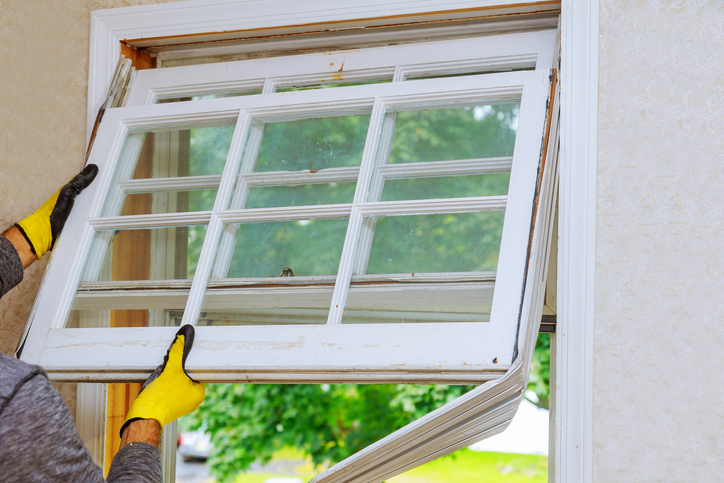
What Qualifies As Energy-Efficient Windows And Should I Replace My Windows?
Arguably any code-compliant double-pane low-E window is significantly more efficient than a single pane window. Newer frames made of extruded fiberglass offer all the benefits of wood or vinyl frames but without their downsides- wood is a renewable resource but can rot, while vinyl is durable, but it is toxic in its manufacturing.
Upgrading windows likely will save some energy and should improve comfort. However the cost of replacing windows is very high and the energy savings will likely not pay back the retrofit for a very long time (more than 25 years), so be wary of outrageous claims. It’s fine to replace your windows, just don’t expect a fast payback.
Storm windows may be more economical. Exterior storm windows can often be added for a fraction of the cost of window replacement. Interior storm windows are also available and generally have a better aesthetic. But, they also cost more. Low-E storm windows are available and are likely worth the upgrade over clear glass and they help with both winter heat loss as well as summer solar gain.
If solar gain is the primary concern, there are exterior shade screens that can drastically help. These are basically thicker weave window screens. You can also consider adding tints and films to the glass. All of these tend to affect the overall aesthetic, which may be a factor.
What Are The Most Energy-Efficient Window Options for Georgia?
Super, high-end, and very expensive triple pane low-E windows do exist, but they are not commonly sold in Georgia since their very high cost is hard to justify. Code compliant new windows are generally good choices
Do Energy-Efficient Windows Cost More?
Standard, no-name brand double-pane low-E windows today are generally good performers and don’t have a cost premium. However, name-brand windows are often significantly more expensive for a similar energy performance, but they do generally offer higher quality and a substantial warranty.
How Does ENERGY STAR Rate Windows, Doors, and Skylights?
Standards change but generally, ENERGY STAR windows are equal to or lower (better) than code-compliant windows on U-factor and SHGC.
How To Choose the Right Window Contractor?
A good contractor will not promise outrageous savings due to window replacement. A reputable contractor will be trained and certified and demonstrate lead-safe practices (RRP) for houses built before 1978. Good window installation will exhibit proper air sealing into the rough opening – generally using backer rod and caulk or appropriate expanding foam for windows. Inquire about proper flashing details – head flashing at the top and pan flashing at the bottom of the window’s rough opening.
Siding / Cladding
What Are The Most Energy-Efficient Siding Options for Georgia?
Brick, wood, vinyl, fiber-cement – cladding doesn’t really have much of an impact on the efficiency of a home. The durability of cladding and the attention to details of moisture management are much more important. Cladding is generally designed to keep exterior water out, but it needs some means of letting any water that gets behind it to have the ability to dry.
If the cladding on your home is going to be replaced, creating a drainage plane (sometimes called a vented rain screen) behind the new cladding is an excellent opportunity for dramatically increasing the durability of the wall assembly. A drainage plane involves installing a water-shedding surface over the sheathing that is separated from the cladding by a small gap. This is often achieved with vertical spacing (furring) strips. Details, such as an insect screen at the bottom of the wall and proper flashing, can result in a high-performance assembly with excellent drying potential. An added benefit is that the lifespan of painted surface claddings with a drainage plane behind them is greatly extended (approximately doubled!), which yields a huge benefit in terms of maintenance.
For a deeper dive, check out the Southface Institute webinar on moisture management.
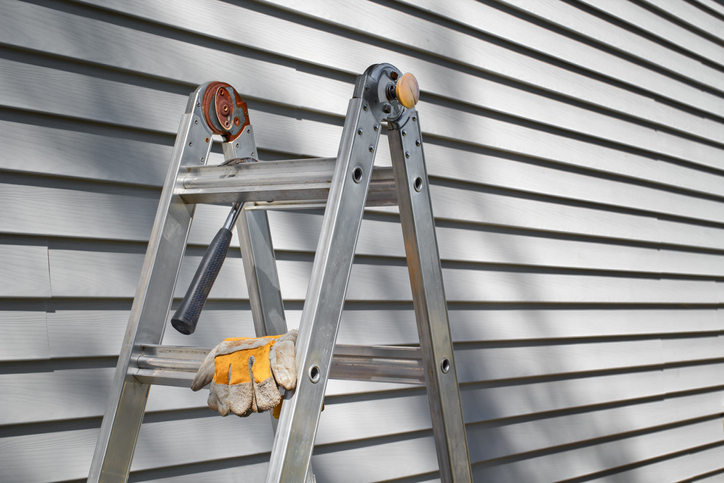
Does Energy-Efficient Siding Cost More?
If siding is being replaced, an energy efficiency improvement option is to add continuous insulation over the existing sheathing. This will affect wall thickness, but it can be incorporated with attention to detail. Continuous wall insulation with a drainage plane behind the cladding will save energy and reduce moisture risk.
How To Choose the Right Siding Contractor?
A reputable contractor will be trained and certified and demonstrate lead-safe practices (RRP) for houses built before 1978.
Good cladding installation will exhibit proper air sealing of the sheathing joints and any penetrations, such as around the rough opening of windows. Details about the water-shedding surface, which may be flashed house wrap, felt paper, or the skin of rigid foam insulation boards, as well as the furring strips to create the drainage plane, are critical. Inquire about proper flashing and air sealing details.
For painted surface cladding, especially wood-based siding, make sure that the cladding is primed on all surfaces-front and back, top and bottom but also at all end grain cuts. These details will extend the time between painting dramatically and are worth the effort.
Insulation and Air Sealing
Why Are Insulation And Air Sealing So Important?
The insulation and associated air barrier make up the building thermal envelope, which defines the boundary between conditioned space and unconditioned or exterior spaces. In new homes, this is generally where the insulation is located – the exterior walls, ceilings, and foundation or floors. Older homes may have little to no insulation and/or no clearly defined air barrier.
Insulation primarily slows conductive heat flow through solids, like walls or ceilings – the higher the R-value the greater its ability to resist unwanted heat flow. Air barriers primarily stop convective heat flow through air movement. They also slow the infiltration of moisture and airborne pollutants. Air barriers and insulation must work together by being complete in their coverage and in contact with each other. Together they make an air-tight blanket to buffer and keep you comfortable when the outside conditions are extreme.
For a deeper dive, check out the Southface Insitute webinars on heat and airflow.
Ceilings with vented attic spaces above offer one of the most common upgrade opportunities in an existing home. It is crucial to check for safety issues, such as pests, electrical wiring, combustion appliances, etc., and to do ALL of the air and duct sealing and other pre-insulation prep before adding insulation. Many “self-diagnosed” comfort and efficiency projects only add insulation and the result is lackluster and disappointing at best. When properly air sealed and insulated, an attic upgrade can yield significant savings and improved comfort.
Walls of existing homes older than a certain age (pre-1990s) may not have any insulation in the framed cavity. With some types of cladding, it is possible to remove a row of siding or drill holes to dense pack insulation (usually cellulose or fiberglass) into the cavities. This process can also be done from inside the home, but it can be messy so it may be best suited when doing an interior renovation. If the siding is removed, consider adding continuous insulation over the existing wall sheathing.
Floor vs. Foundation walls – in general, underfloor insulation is hard to do well and has a poor track record of durability. Before insulating a floor, make certain all air sealing is performed and then add insulation using generous quantities of wire stave supports (“tiger teeth”). It is critical that the underfloor insulation be fully in contact with the air barrier (floor decking) above it.
Often there is mechanical equipment located in the basement or crawlspace. In this case, seal up any exterior vents and insulate the foundation walls to bring the HVAC unit and ductwork inside the conditioned thermal envelope. Insulating the foundation walls can be done with a number of products and care should be given to details such as moisture, combustion safety, and pest control.
For more on conditioned crawlspaces, check out the Southface Institute webinars.
You can also click here for a link to Energy and Water Efficiency Project Implementation Verification Checklist document that can help guide you.
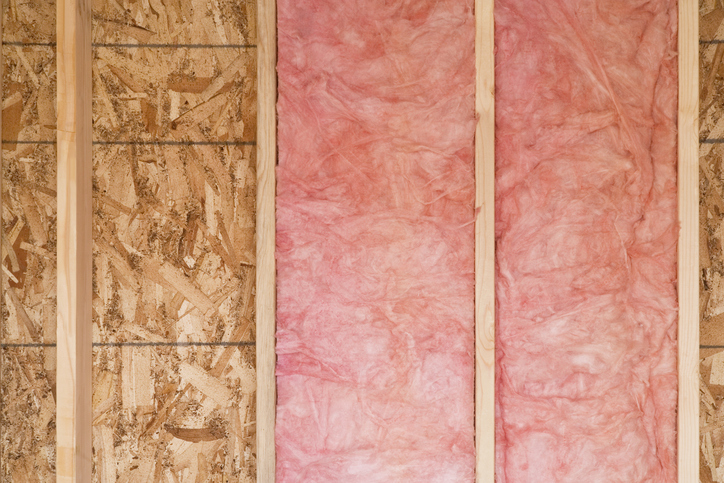
Can Insulation Be Added To Existing Walls?
Walls of existing homes older than a certain age (pre-1990s) may not have any insulation in the framed cavity. With some types of cladding, it is possible to remove a row of siding or drill holes to dense pack insulation (usually cellulose or fiberglass) into the cavities. This process can also be done from inside the home, but it can be messy so it may be best suited for during an interior renovation. If the siding is removed, consider adding continuous insulation over the existing wall sheathing.
How Does ENERGY STAR Rate Insulation?
Insulation that has been certified by EPA-recognized third-party certification bodies is independently tested to ensure it delivers performance while meeting strict safety standards. ENERGY STAR only partners with insulation manufacturers that agree to have their products tested by a third-party certification body. ENERGY STAR also requires that certified insulation is tested to meet flame retardancy requirements to help promote fire safety.
The performance of insulation is also highly dependent on the quality of the installation. That is why ENERGY STAR requires manufacturer partners to include instructions that clearly explain how to install their products to ensure maximum performance. Instructions also include safety information to protect the health of you and your family.
How To Find Financing for Energy-Efficient Home Improvements?
Are Energy-Efficiency Home Improvements Expensive?
Basic envelope improvements can be implemented by the homeowner with a little bit of DIY capability and relatively affordable materials like caulk, canned foam, mastic, and foam board. Hiring a contractor to perform the basic envelope improvements can cost a few thousand dollars, but likely less than $10,000.
Major projects like proper crawl space encapsulation with wall insulation and a dehumidifier are likely bigger investments as are HVAC equipment replacements.

What Is An Energy Improvement Loan?
See Homestyle Energy Mortgage below.
What Is A Green Loan?
Green loans are personal loans that can be used to pay for energy-efficient and sustainable home improvement projects. Green loans can be used for improvements like solar panel installations, weatherization, or upgrading older, less efficient appliances.
What Is A HomeStyle Energy Loan?
These loans are used during the purchase or refinancing of your home. Homestyle Energy Mortgage allows the borrower to make upgrades to conserve energy, cut down utility costs, or make their home more resilient. Borrowers can finance basic home weatherization, renewable energy implementations, and resiliency upgrades. This link takes you to Fannie Mae.
How Do Energy-Efficient Mortgages Work?
When a RESNET HERS rater performs a Home Energy Rating, the home is eligible for an energy-efficient mortgage (EEM). An EEM requires a refinance, but it allows the borrower to roll the cost of energy-efficiency upgrades into the new mortgage. The bundle of home improvements are eligible provided the modeled energy savings is documented to be less than the increased loan amount.
See www.resnet.us for more information.
Other Resources
Here are a few of our favorite resources to learn more about home energy efficiency in Georgia.
Southface has a glossary of terms that helps decode key energy efficiency terms.
Do you rent your home or apartment? These efficiency tips for renters offer helpful ways to save energy even if you don't own your home.
Energy Star Home Advisor is a helpful guide to performing a basic energy assessment of your home. Energy Star also offers tips for efficiently heating and cooling your home.
Checking the Database of State Incentives for Renewables & Efficiency is a great way to save money on energy efficiency upgrades.
Learn more about advanced building science topics with free Southface Institute Building Science Webinars on topics including ventilation, conditioned crawlspaces, ducted mechanicals and insulated rooflines.
Learn more about Energy Star products, from appliances to lightbulbs to windows and more. Energy Star also maintains a list of the most efficient products on the market each year.
You can find tips on how to make your water heater last longer from Water Heater Rescue.
Southface Institute offers an Energy and Water Efficiency Project Implementation Verification Checklist document that can help guide you in your home projects.
Homestyle Energy Mortgages can help you finance basic home weatherization, renewable energy implementations, and resiliency upgrades.
An energy-efficient mortgage (EEM) is another way to obtain financing for energy-efficiency home upgrades. To be eligible, a RESNET HERS rater must perform a Home Energy Rating. The Residential Energy Services Network has more information on the process.
Curious about heat pumps? Read more about the benefits about replacing your air conditioner with an energy-efficient heat pump.
The Southern Alliance for Clean Energy offers a guide to "What to Expect from a Home Energy Audit."
Rewiring America offers a useful tool for planning and prioritizing a home electrification project.
Glossary of Terms
| AC Motor | These are motors that convert alternating current (AC) electricity into mechanical power by using an electromagnetic induction phenomenon. |
| Annual Fuel Utilization Efficiency (AFUE) | The Annual Fuel Utilization Efficiency is a performance term for furnaces in the heating season - it represents heating output (kBtu's) divided by fuel input (kBtu's). It is a seasonal term so it accounts for cycling and standby losses. Older atmospheric furnaces may have been 60-70% AFUE, standard furnaces today are 80% AFUE and condensing furnaces are > 90% AFUE. |
| Air Barrier | This refers to the components of an assembly that are solid or sealed materials to prevent air leakage. When installed in conjunction with insulation, this makes up the building thermal envelope. |
| Air-to-Air Unit | These are typical air conditioning and heat pump equipment that extract or reject heat (depending on the season) from the house air and then reject or extract that heat to the outdoor air. |
| Backdrafting | This occurs when combustion equipment's flue gases do not properly vent outwards; negative pressure at the appliance or clogged and/or improper flue connections can lead to pulling combustion products (such as carbon monoxide) back into the space. |
| British Thermal Unit (BTU) | A BTU is a small quantity of energy in imperial units. By definition, a BTU is the amount of energy it takes to raise the temperature of one pound of water 1 degree Fahrenheit (which is about the energy of a wooden kitchen match). If a 16 oz. water bottle at 68F had 2 Btu's added, it would be 70F. For conversion, 3.413 Btu = 1 W-hr |
| Conditioned Space | This is the portion of a building that is inside the building thermal envelope. This space is typically directly conditioned and finished but may also be indirectly conditioned and not necessarily finished space. |
| Convective Heat Transfer | Convective heat flow occurs through a fluid which may be a liquid or gas. In a home, air leakage is an example of unwanted convective heat transfer. |
| DC Motor | A direct current (DC) motor transforms electrical energy into mechanical energy by creating a magnetic field that is powered by direct current. |
| Dehumidification | This is the removal of water vapor from the air. |
| Demand-Based Recirculation System | A recirculating hot water system uses a pump to run hot water through a loop of piping so that fixtures get hot water quickly. This can be energy intensive, so a demand-based system only operates when a button is pushed or an occupancy sensor is triggered. |
| Drainage Plane | This is a liquid water shedding surface with an intentional gap to facilitate drainage. An example is a brick veneer cladding with a 1 inch gap and felt paper or housewrap as the water shedding surface. |
| Duct Leakage | This is the amount of air measured in cubic feet per minute (CFM) that a duct system loses during operation. It includes conditioned air leaking out as well as unconditioned air pulled into the duct system. |
| Electroluminescence | This is an optical and electrical phenomenon in which a material emits light in response to the passage of an electric field with a solid. |
| Energy Factor | The energy factor (EF) of a water heater is a function of two terms, the ability of the unit to efficiently create hot water from a fuel when firing as well as the standby losses when the unit it not firing (heat loss through tank, pilot light, etc.) |
| Energy Recovery Ventilators | Energy Recovery Ventilators (ERV's) have two air streams that move in opposite directions (one pulls stale air out of the house, the other pulls fresh air into the house). The airstreams do not mix but a heat exchange media in an ERV transfers both heat and moisture from one stream to the other, which tempers the fresh air before it is introduced into the house. |
| Energy Simulation | This is an energy model that simulates the flow of heat and energy used by a building during a year's time. |
| ENERGY STAR | This is a program of the US Environmental Protection Agency (EPA) that recognizes the most efficient products, appliances, and buildings (www.energystar.gov). |
| First Hour Rating | When called for by the occupants of a home with a tank water heater, cold water replaces the hot water that is drawn out. The burner or element fires and creates more hot water than the actual volume of the tank during the first hour of operatation. |
| Ground Source Equipment | Sometimes referred to as "geothermal", ground source heat pumps extract and reject heat (depending on the season) to the earth (usually through buried piping filled with water) as opposed to the ambient air. |
| Ground-Coupled Unit | See ground source equipment. |
| Heat Pump | A heat pump is virtually identical to an air conditioner in the summer time. Heat from the house air is extracted and rejected to the outdoors (via a compressor-driven refrigerant loop). Unlike an AC, a heat pump features a reversing valve that allows the unit to run in the opposite direction in the winter time (extracting heat from the cold outdoors and rejecting it inside to provide space heating). |
| Heat Pump Water Heater | An electric-fired tank water heater does not rely on current passing through an electrical element to heat water, but instead it utilizes a heat pump to extract heat from around the unit to then put into the water. |
| Hot Water Distribution | This refers to the pipes and plumbing that deliver hot water from the source appliance to the fixtures that use it. |
| "House as a System" | This refers to efforts that recognize the interaction of the parts and features of a home. An example would be if a powered attic ventilator (PAV) fan created a negative pressure in the home during summertime operation, causing a water heater to backdraft and release poisonous carbon monoxide. |
| Heating Season Performance Factor (HSPF) | The Heating Season Performance Factor (HSPF) is a performance term for heat pumps in the winter mode - it represents heating output (kBtu's) divided by energy input (kWh). HSPF is analagous to SEER for cooling mode and higher is better. |
| HVAC | HVAC stands for Heating, Ventilating and Air Conditioning equipment. Note that often ventilation is not included, so the equipment only performs space heating and cooling. |
| Incandescent | This is light emission resulting from heat. |
| Latent Cooling | This is the portion of the work done by an air conditioner to remove the moisture of the air (dehumidification). |
| Low-E Windows | Low-emissivity (low-e) coated windows contain a very thin metallic coating that allows visible light to pass through but reduces heat transfer via UV or infrared radiation. |
| Manual J Calculation | This is a methodology for determining the amount of cooling or heating needed by a house under design conditions (almost hottest day, almost coldest night). |
| Manual S Calculation | This is a methodology for selecting proper air conditioning and heating equipment based upon the calculated loads and equipment specifications. |
| Positive Pressure Ventilation | This is the opposite of an exhaust fan, which creates negative pressure. Positive pressure ventilation introduces outdoor air into a space from a known location (and the same amount of conditioned air will leak out of the space). Positive pressure is desirable in humid climates. |
| Radiant Barrier | Typically foil-faced, a radiant barrier is a low-emitting surface that is often applied to the rafters or underside of roof decking in a vented attic. The surface must not be in contact with other materials or else conduction would occur. |
| Return Air Pathway | This is the route by which air that is supplied to a space via the supply ducts makes its way back to the air handling unit (AHU) blower in order to recirculate house air. |
| R-Value | This is the resistance to conduction heat flow. The R-value is the inverse of U-factor and the higher the R-value, the more efficient the insulation coverage is. |
| Seasonal Energy Efficiency Ratio (SEER) | The Seasonal Energy Efficiency Ratio (SEER) is a performance term for air conditioners. It represents cooling output (kBtu's) divided by energy input (kWh). Higher is better! |
| Sensible Cooling | This is the portion of the work done by an air conditioner to change the temperature of the air (sensible heat removal). |
| Solar Heat Gain Coefficient | See solar gain |
| Solar Gain | This refers to the radiant solar energy that is gained through a component, such as a window. Solar Heat Gain Coefficient (SHGC) is a cooling season performance value for a window, and lower is better. A single pane clear glass window might have an SHGC = 0.8, a double pane clear glass window SHGC = 0.5, and a double pane low-e window might be 0.27. |
| Thermal Envelope | The building thermal envelope is the boundary that separates conditioned space from unconditioned spaces. It consists of the air barrier in conjunction with the insulation. To work properly, the insulation and air barrier must be continuous and in contact with each other. |
| U-Factor | U-factor is a heating season performance value for a window and is highly affected by both the glass and the frame; lower is better. A single pane clear glass metal-frame window might have a U-factor of 1.3 while that same window with a wood frame might be U-factor of 1.0. A double pane clear glass wood-frame window has a U-factor around 0.5 and a double pane low-e wood-frame window would have U-factor around 0.33. Extruded fiberglass and vinyl frames perform comparably to wood. |
| Unconditioned Space | This is the portion of a building that is outside the building thermal envelope. This space is not intentionally conditioned. |
| Uniform Energy Factor | This is the US Department of Energy (DOE)'s newer term that classifies water heater efficiency based on usage. UEF ratings are determined by assigning water heaters into one of four different categories (bins) of hot water usage and then evaluating their performance based on that usage. A water heater is assigned a UEF within its bin based upon its first hour rating. A higher UEF means a water heater is more energy efficient and will cost less to operate compared to other water heaters in the same bin. A water heater’s UEF can only be compared with water heaters within the same bin. |
| Veriable Speed and Capacity AC | These are heating and cooling equipment that can automatically adjust its speed and output based on the actual heating and cooling loads on the house at that particular hour. |
| WaterSense | Similar to ENERGY STAR, this is a label for more water efficient fixtures in various categories of usage. |
| Weatherization | This is a process of making energy-efficient improvements to a home. It typically consists of air sealing and insulating the home and sealing and improving the ductwork. |
Meet Our Experts
This toolkit was written by the experts at the Southface Institute.
Mike Barcik
Technical Principal
Southface Institute
Peter Carpenter
Education Program Manager
Southface Institute


